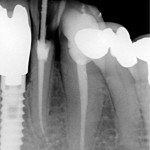
Ten studies including both in vivo and ex-vivo designs were included in this review of electronic apex locators. The authors found that precision varied with the device and type of irrigation but was not influenced by the status of the pulp tissue. However, the quality of the included studies was not high with only two being considered to be at low risk of bias.
[read the full story...]